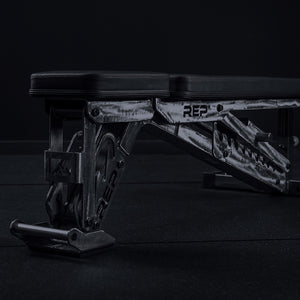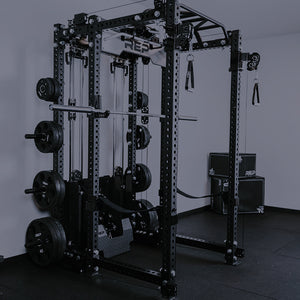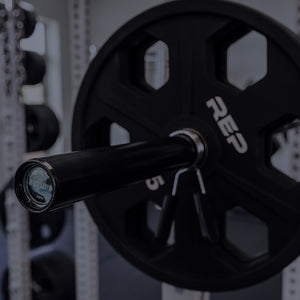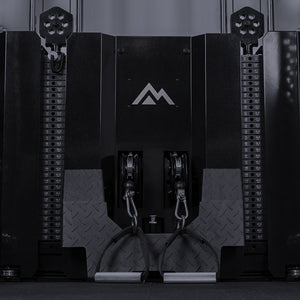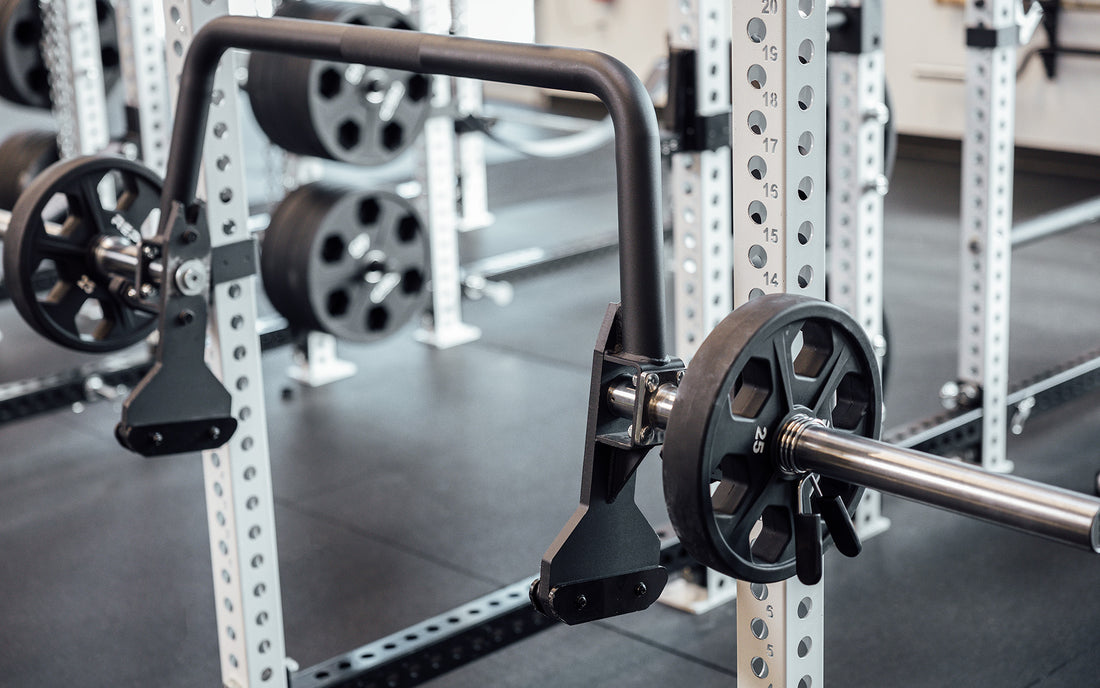
The trap bar is one of the more unusual bars (also known as the hex bar due to its hexagonal shape).
At first, it can be intimidating to use. And if you are unfamiliar, it’s easy to get confused as to what its purpose actually is. Is it a deadlift? Is it more like a squat? Is it better or worse than either of those? Is it just King Kong’s lost earring?
Turns out, there is no simple yes or no answer. (Except the King Kong part.) It all depends on what you want to accomplish and what you’re training for. But once you understand how to properly approach the trap bar, it can be a heck of a good addition to your routine.
Is the trap bar a deadlift?
The trap bar is a similar exercise to deadlifting on a traditional straight bar, but it has a few key differences.
- Rather than holding a barbell in front of your body, you hold handles at your sides. This allows your pull to begin farther back near your ankle, making it nicer on your spine.
- This position also allows you to pull your shoulders back during the lift rather than fighting the forward pull of a barbell deadlift.
- Lastly, the neutral grip (holding the handles on the sides) prevents the bar from rolling out of your hands as easily as with a straight bar in front of you.
Is the trap bar better than a barbell deadlift?

Both the straight-bar deadlift and the hex-bar deadlift are effective exercises for building power and strength. Neither is a “bad” exercise, but both should be approached respectfully—you know, like petting a tiger.
One of the first things to address when comparing them is the concern about the safety and risks of traditional deadlifts.
When it comes to straight-bar deadlifts, once you have been properly trained and know how to execute a safe and effective deadlift, ask yourself what your goals are. If you are wanting to get better at straight-bar deadlifts, train straight-bar deadlifts. If you are a competitor in powerlifting, Strongman, or other strength-based competitions where straight-bar deadlifts are a common event, train straight-bar deadlifts. They are a staple of the gym for a reason, but if executed incorrectly, there is certainly risk.
However, if your goal is simply to build strength in your back, legs, and glutes, the trap bar provides a simpler and safer approach—especially if you are newer to the gym.
The side handles allow you to pull parallel to your heels rather than from your toes. This takes a good chunk of the strain off your lower back, allowing you to pull the weight straight up. The handles also put your shoulders in a tighter, pulled-back position. (These are both postural benefits that can also be achieved when doing a traditional, barbell deadlift, of course, but it takes less practice and experience to keep your body safe and protected by perfect form with a hex-bar deadlift.)
Ultimately, if you are new to strength training, the trap bar can be a safe teacher.
Is the trap bar better than back squats?
Similar to the deadlift, comparing back squats to squatting with a trap bar is not a matter of a “good or bad exercise,” but more so which exercise is better for you.
The safety benefits are similar to those of the deadlift. The barbell back squat requires more of your lower back to support the weight and keep your back straight, as well as demanding your shoulders, elbows, and wrists to be able to hold the bar high on your back. If you have any injuries or pain in your lower back or your arm joints, it can be difficult to get the most out of your back squats. These are common difficulties, and they are unfortunate, because squats of any kind are some of the most beneficial movements for overall strength and power.
If you struggle with any of these, behold, the trap bar squat! The trap bar can provide some lower back relief by taking the bar off your shoulders, as well as keeping your arms straight down by your sides, thusly diminishing the strain or pain in your arm joints.
Is there a difference between hex-bar squats and hex-bar deadlifts?

The hex bar can be tricky to differentiate between a squat or deadlift, as it feels like it is a blend of both.
- For the deadlift, think of your body as a scissor-lift, legs and back starting at an equal forty-five-degree angle before straightening evenly.
- If you want to focus more on a squat motion, lower your hips at the bottom of the lift to the depth of a squat. From there, keep your chest and face up, keep a straight back, squeeze your shoulders, and voila, you’ve got yourself a squat variation.
Ultimately, it is nearly impossible to isolate one exercise from the other while using a trap bar, but your hip depth will determine whether your lower back and hamstrings or your quads and glutes take the brunt of the load.
What other exercises can you do with a trap bar?
The hex bar, like every barbell, dumbbell, and other pieces of gym equipment, can be used for many different exercises. It is but a tool, and you are the mighty sculptor! Squats and deadlifts are their most common uses, but here are just a few of the other exercises a trap bar can do:
-
Farmer’s carry: Load up your weight, pick up the trap bar by the side handles, and see how long you can hold it/walk with it before your grip gives out. This will help develop your Popeye arms and strength.

- Shrugs: Once you have stood up with the bar, lift your shoulders from their lowest position up to your ears. You’ll never have mice on your shoulders again with all those “traps.” 😉
- Burpee jumps: Now this exercise is not for the faint of heart, but if you’re a masochist looking for a crazy cardio workout, apply a trap bar (preferably an open trap bar) to a traditional burpee. Hold the handles while jumping out to a plank, do your pushup, jump your feet forward into the trap bar, and leap straight up with the weight in-hand. They. Are. Awful—ly effective.
-
Lunges: Much like holding dumbbells for lunges, but without the competing stability of separate weights, hold the open trap bar handles at your sides and let the torture, er, fun begin.

- Planks: This can be a very wrist-friendly plank variation. By holding the side bars, your wrists are straight rather than bent in a push-up position. Squeeze tight and pray as your midsection suffers the challenges of gravity.
There are many other exercises you can do with the hex bar, but whether you get creative with its application, or you use it as an alternative/addition to squats and deadlifts, it is a powerful tool.
Learn more about trap bars

NEWSLETTER SIGNUP
Product launch information, promotions, blogs, and REP news.

